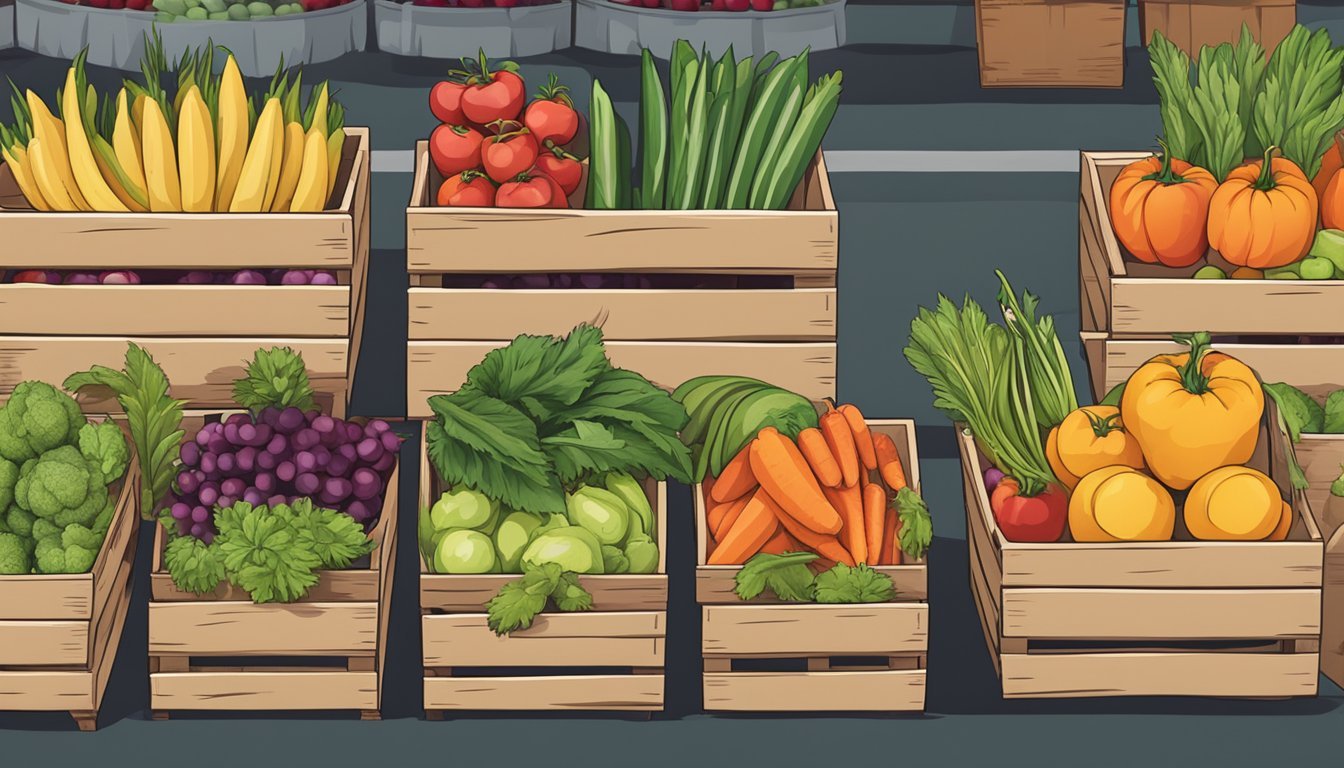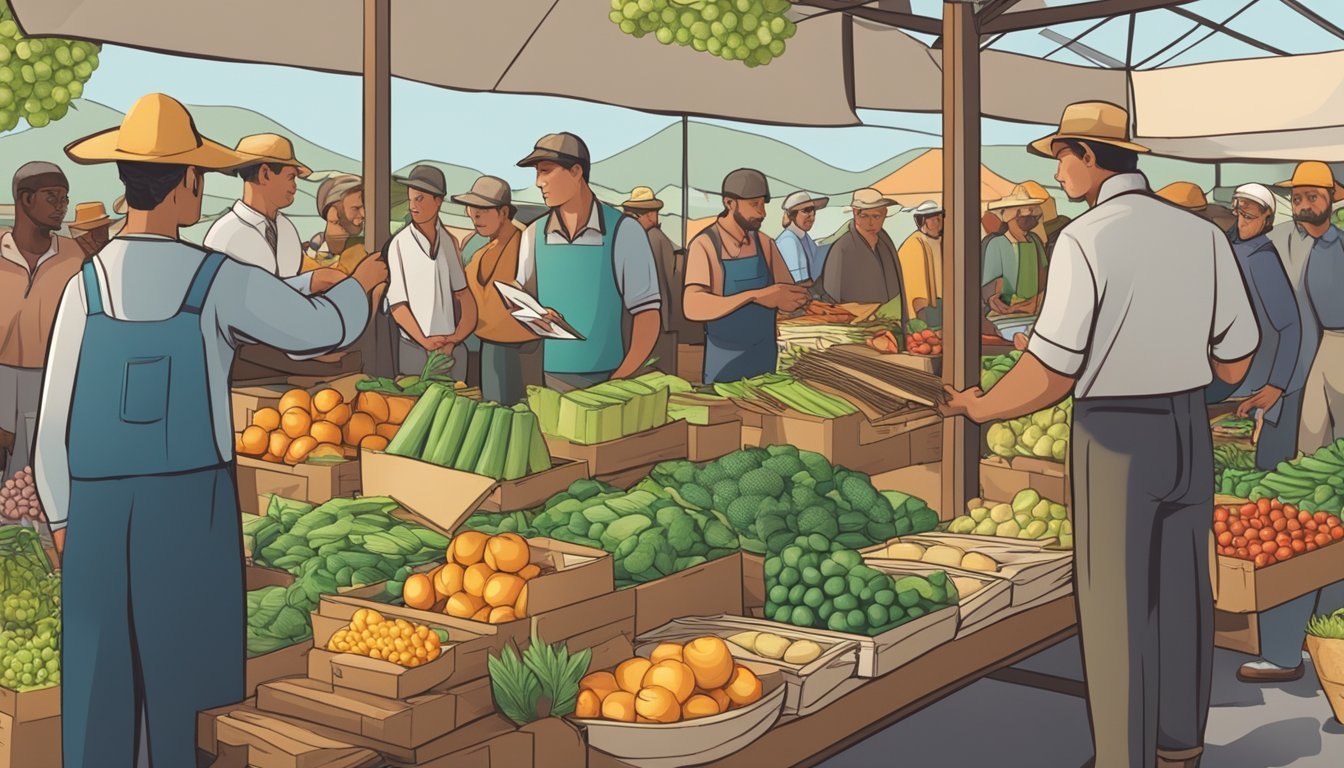Community Supported Agriculture (CSA) Models
An Overview of Sustainable Farming Partnerships
Community Supported Agriculture, or CSA, is a model of farming that forges a direct connection between local farmers and consumers. In this arrangement, consumers typically buy shares of a farm's harvest in advance, supporting the farm's operational costs at the start of the growing season. This model provides consumers with regular deliveries or pickups of fresh produce, while offering farmers financial stability and a guaranteed market for their crops. It's an alternative to the traditional food supply chain, aiming to benefit both producers and consumers by fostering a closer relationship.
The financial structure of CSAs can vary; members might pay for their shares in a single payment or via installments. Each share corresponds to a portion of the farm's production and is often referred to as a “subscription.” The cost and amount of produce delivered in each share can vary depending on the specific farm and the length of the CSA season. By joining a CSA, members take part in the risk and reward of farming, sharing in the bounty of a good harvest and understanding the impact of adverse weather or other challenges.
CSAs are not just a commercial transaction but a form of partnership between the farmer and the community. This model encourages sustainable agriculture practices and environmentally friendly methods, enhancing community resilience. The partnership typically results in members receiving a variety of fruits and vegetables throughout the season, directly linking them to the rhythm of the agricultural calendar.
Understanding CSA
Community Supported Agriculture (CSA) represents a partnership between farmers and consumers where the responsibilities, risks, and rewards of farming are shared.
History and Evolution
Community Supported Agriculture, first established in the early 1960s in Germany, Switzerland, and Japan, arose from concerns about food safety and the urbanization of agricultural land. It spread to the United States in the 1980s and has since grown in popularity as consumers increasingly seek direct connections with the food production process. Over time, the CSA model has become a globally recognized system, with variations implemented in regions such as France, the United Kingdom, India, and China.
CSA Model Fundamentals
The CSA model functions through members purchasing shares of a farm's anticipated harvest. These shares typically consist of a box of vegetables, but may also include other farm products. Members receive these products regularly throughout the farming season. This model addresses both farmer financial stability by providing upfront capital and allows consumers to have fresh, often organic, and locally-grown produce. The United States has seen a notable increase in CSA farms, illustrating a growing community-supported commitment to sustainable agriculture.
Types of CSA Models
There is a diversity of CSA models, tailored to different farmer and consumer needs:
Traditional CSA Model: Members pay upfront for the season and receive a share, reflecting the season's highs and lows.
Market-Style CSA: Members select their preferred products from a varied selection at a designated pick-up location.
Boxed Share CSA: Pre-packed boxes are delivered to members or picked up at a location, often allowing for some customization of contents.
Each of these types facilitates a unique way in which communities support agriculture, fostering a localized approach to the food system.
Operational Aspects of CSA
Community Supported Agriculture models are complex, involving meticulous farm management, strategic production and harvesting, and efficient distribution systems. Each aspect is crucial in creating a sustainable and reliable link between farmers and consumers.
Farm Management and Labor
In CSA models, farm management is pivotal in coordinating the diverse tasks associated with crop production. Farmers must plan labor needs carefully, considering the seasonality and demands of various crops. Efficient labor management includes scheduling for planting, weeding, and maintenance to ensure a successful harvest. Additionally, many CSA farms also integrate livestock management into their operations, necessitating a skilled workforce for the care and processing of products such as meat and eggs.
Key Roles: Farmer, Farm Manager, Field Workers
Tasks: Planting, Weeding, Feeding Livestock
Output Products: Vegetables, Fruits, Eggs, Meat
Production and Harvesting
The production phase in CSA revolves around cultivating a variety of crops, tailored to community needs and seasonal patterns. Crop planning for vegetables and fruits is fundamental, with an emphasis on ecological practices. Harvesting requires a coordinated effort to ensure that crops are picked at peak freshness, maintaining quality for CSA members.
Crops: Locally adapted, seasonal varieties
Harvesting Tools: Hand tools and machinery
Harvest Times: Scheduled for peak ripeness and quality
Distribution and Consumer Pickup
Once harvested, CSA products are distributed directly to consumers, typically at a designated pickup location or through home deliveries. The key to smooth distribution lies in a well-organized system that tracks member shares and handles products with care to preserve their freshness. This direct-to-consumer approach strengthens the connection between the community and the farm, offering insights into the origin and handling of their food.
Pickup Points: Farm, Markets, Drop-off Locations
Delivery Mode: Pre-boxed shares or market-style selection
Member Engagement: Frequent updates and communication
Each operational component of CSA blends together to support a resilient food system that benefits the local community and environment.
Community and Stakeholder Engagement
In Community Supported Agriculture (CSA) models, stakeholder engagement is the linchpin of success, underpinning the relationships and cooperative efforts between local farmers and consumers. Here, we explore how these interactions are structured and facilitated to support a robust community.
Building Producer-Consumer Relationships
CSA models thrive on strong producer-consumer relationships. They foster a direct line of communication, enabling consumers to gain a better understanding of the farming process and appreciate the value of locally sourced produce. This bond is not transactional but rather a partnership. Consumers become shareholders in the local farm's output, investing upfront and sharing in the risks and rewards of agricultural production. Relationship-building activities can include farm visits, newsletters, and interactive harvest days, which serve to strengthen these ties and underpin the clientele membership club ethos of CSA.
Role of the Core Group
The core group is an essential collective within the CSA. Comprised of key stakeholders, usually committed members or consumers, they often take on leadership roles in decision-making, communication, and the coordination of distribution logistics. The involvement of the core group can epitomize a true cooperative spirit, where the lines between consumer and provider blur, thereby creating a resilient partnership. This core group serves as the backbone of the CSA, ensuring its values align with those of the community and effectively managing the relationship between all parties.
Volunteering and Community Participation
Volunteering is the cornerstone of community participation in CSA models. By contributing time and labor, volunteers directly support their CSA and reinforce the concept of shared responsibility. These opportunities often include tasks such as planting, weeding, and harvesting, which are crucial to the local farm's operation. CSA’s create structures for involvement, inviting individuals to take part in the broader mission of nurturing sustainable, local food systems. This approach not only reinforces the relationship between community and local farmers but also enhances the investment of each shareholder in the farm’s success.
Economic and Legal Considerations
Community Supported Agriculture (CSA) is a business model that necessitates careful economic planning and adherence to legal standards. This section addresses the main economic components – pricing and shares, business planning, and regulatory compliance – ensuring CSA operators can meet financial targets while staying within legal mandates.
Pricing and Shares
Share Price and Size: Determining the appropriate share price and size is critical. Prices must cover production costs and provide a viable income for the farmers. According to a 2009 survey of community supported agriculture producers, prices can vary considerably, reflecting local economic conditions, the variety and quantity of products offered, and the overall farm budget. CSAs generally offer a range of share sizes to meet different household needs and budgets.
Example Share Structure:
Small Share: Suitable for 1-2 people
Medium Share: Designed for small families
Large Share: Best for large families or shared households
Business Planning and Financial Management
A business plan is the blueprint for successful CSA operations. It should detail the farm's structure, market analysis, sales strategy, and financial management procedures. A comprehensive business plan helps in securing loans or investments and serves as a guide for sustained growth. Operational budgets should include projections for both revenue and expenses, and highlight the importance of managing cash flow to ensure the CSA can operate smoothly throughout the season.
Key Elements of a Business Plan:
Executive Summary
Company Description
Market Analysis
Organization and Management
Sales Strategies
Funding Request
Financial Projections
Regulations and Compliance
CSA operators must navigate a web of regulations and compliance issues. They must understand local, state, and federal laws, including those enforced by the U.S. Department of Agriculture (USDA) and the Environmental Protection Agency (EPA). These can pertain to food safety, organic certification, labor laws, and environmental regulations. Compliance ensures not only the safety and satisfaction of CSA members but also the long-term viability of the CSA business. Regular consultation with legal professionals can help preemptively address potential legal challenges.
Regulatory Areas to Consider:
Food Safety Modernization Act (FSMA) Compliance
Employment and Labor Laws
Environmental Protection Standards
Environmental Impact and Sustainability
Community Supported Agriculture (CSA) models play a crucial role in promoting sustainable agriculture practices. They contribute to sustainable development by fostering methods that have a positive impact on the environment and natural resource management, while also addressing climate change.
Sustainable Agricultural Practices
Community Supported Agriculture often incorporates organic farming and permaculture techniques. These systems avoid the use of synthetic fertilizers and pesticides, instead relying on soil amendments and biological pest control, which are healthier for both consumers and the environment. The practice of crop rotation and natural livestock rearing are commonly integrated within CSA models, enhancing soil fertility and reducing the need for chemical inputs.
Impact on Climate Change and Emissions
CSAs can significantly reduce greenhouse gas emissions associated with large-scale agriculture. By focusing on local distribution, transportation emissions are minimized. Moreover, the promotion of agro-ecological practices within CSAs plays a role in carbon sequestration, with well-managed soils potentially serving as carbon sinks, mitigating the effects of climate change.
Soil and Natural Resource Management
Resource management is key in CSA models, with an emphasis on preserving soil quality through sustainable farming practices. Regular use of compost and soil amendment strategies enhances soil structure and water retention. Water conservation techniques, such as drip irrigation and rainwater harvesting, are integral to CSA operations, reflecting a commitment to sustainable development and natural resource management.
Consumer Benefits and Responsibilities
Health and Nutrition
Consumers who participate in Community Supported Agriculture have the unique benefit of accessing freshly harvested produce directly from local farms, which can lead to an increase in vegetable consumption and improved nutrition. The connection between local growers and community members through CSA ensures that individuals receive a diverse array of seasonal foods, which can contribute significantly to a balanced and healthful diet.
Understanding the Risks
CSAs operate on a shared-risk model, meaning consumers must recognize the potential for fluctuations in harvest due to factors like weather or pests. By agreeing to this model, they implicitly accept the possibility of variable yields. However, they also contribute to food security by investing directly in food production, allowing farmers to plan and manage their crops with assured demand.
Supporting Local Food Systems
By choosing CSA, consumers play an active role in supporting local food systems. Their upfront payment for seasonal shares provides financial stability for farmers and allows for direct reinvestment into the agricultural community. Additionally, this model nurtures a sustainable food supply chain, satisfying the growing demand for local and responsibly grown produce.
Consumer engagement with CSA models does more than just fill their pantries with local food; it reinforces a partnership with growers that fosters community resilience and food sovereignty.
Marketing and Expansion
As Community Supported Agriculture (CSA) models adapt to the 21st century markets, innovative marketing approaches and strategic expansions are essential. Additionally, establishing clientele membership clubs has proven to be an effective means of ensuring sustainability and growth.
Direct Marketing Strategies
Farmers and producers have capitalized on direct marketing to deliver goods directly to consumers, bypassing traditional retail channels. In states like Massachusetts and New Hampshire, direct marketing through farmers markets and CSA has fostered close relationships between farmers and their communities. Producers often use subscription-based models, where members pay upfront for a season's worth of product deliveries, thus providing farmers with much-needed capital at the start of the growing cycle.
Expanding CSA Reach
To reach a broader audience, some CSA models are integrating with food hubs, thereby pooling resources and logistical support to distribute goods more efficiently. This strategy allows for the expansion of CSA models by connecting producers with a larger network of consumers, including schools, restaurants, and hospitals, who are interested in sourcing local, fresh produce and artisanal goods.
Creating Clientele Membership Clubs
Clientele membership clubs have transformed CSA models into more than just transactional relationships. They often offer exclusive benefits, such as special access to limited produce, discounts, or members-only events. These clubs create a sense of community and loyalty, encouraging ongoing support from members, which in turn provides a more predictable income stream for producers.
By adopting these marketing and expansion strategies, CSAs can ensure their relevance and have a lasting impact on their local food systems.
Innovation and Future Directions
The landscape of Community Supported Agriculture is evolving, driven by creativity and a synergy with other agricultural practices. Embracing cooperation and communication, these models aim to provide high-quality food while ensuring economic benefits for both producers and consumers.
Emerging CSA Concepts and Variations
In recent years, innovative CSA models have emerged, reflecting a strong inclination towards agroecology and addressing the call of the land. SoLaWi, a German adaptation of CSA, has introduced a cooperative approach that accentuates social solidarity in farming. This new variant not only enriches the diversity of CSA models across the nation but also strengthens the ties between the community and its native producers. Another trend is the rise in digital platforms that enhance customer-farmer interaction, thus promoting transparency and trust.
Integration with Other Agricultural Models
Integration with local markets and other farm sales channels has offered CSAs a sustainable avenue for growth. The University of Kentucky exemplifies this through its active engagement with CSA, integrating academic research and community outreach. CSAs are increasingly adopting hybrid models that blend direct-to-consumer sales with retail or wholesale channels, fortifying their market presence and economic resilience.
Long-term Economic Benefits
Community Supported Agriculture is not just a method for procuring high-quality food, it is a model with profound long-term economic benefits. Local economies receive a boost as CSAs nurture native community engagement, ensuring that farm revenues circulate within local systems, fostering economic interdependence. In addition to creating local employment opportunities, CSAs also contribute to agricultural sustainability by promoting eco-friendly farming practices that benefit both the land and the consumers.






